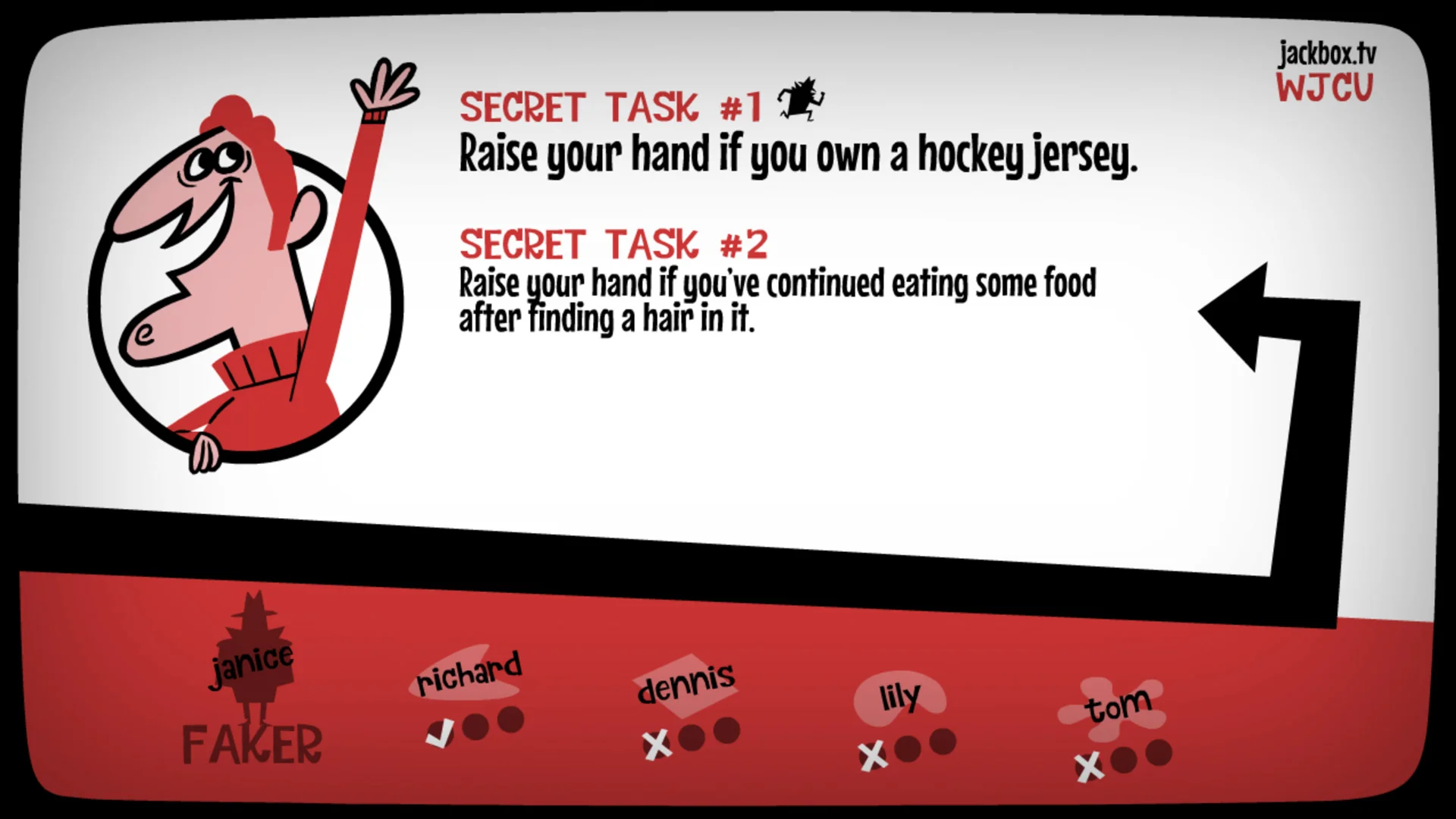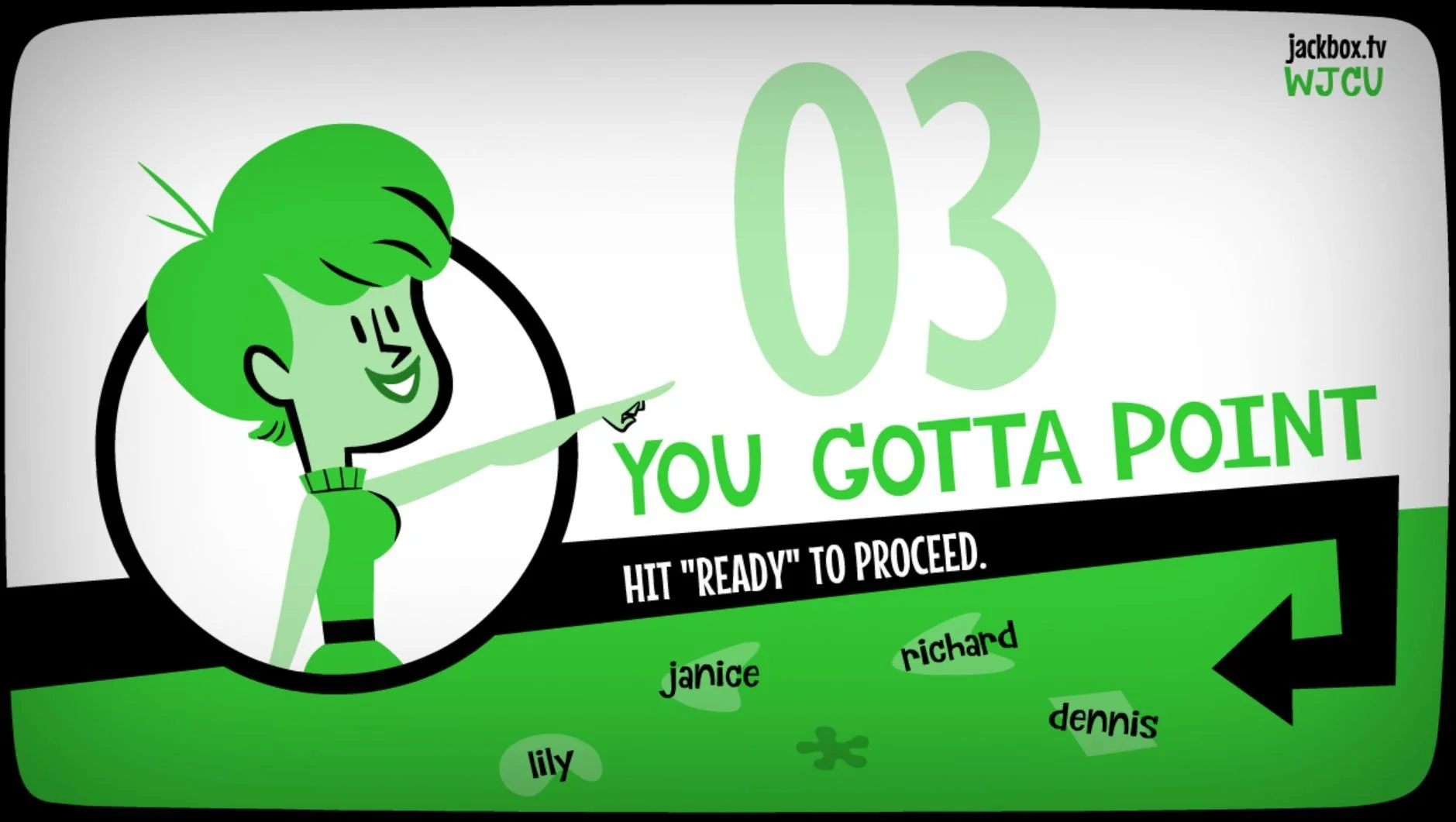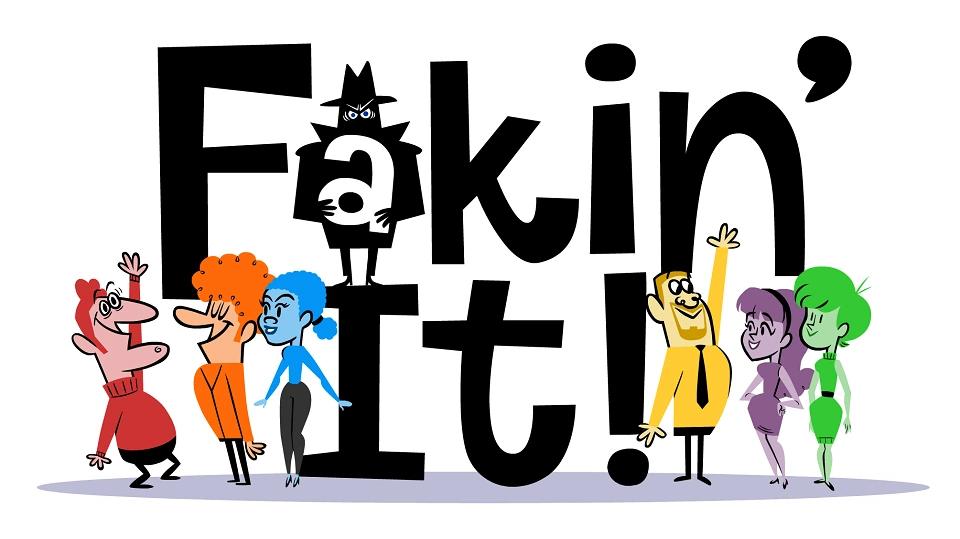For this assignment, I played “Fakin’ It” by Jackbox Games purchased on Steam. “Fakin it is a unilateral competition game where players’ objective is to uncover who the “Faker” is in their group, while the Faker must try to blend in with the other players and not get caught (Outwit).
Each round, one player gets to pick the type of prompt everyone receives. Some examples are “Raise your hand if….”, “Raise # number of fingers” and “Point to a person that…”. Everyone except for the faker receives the same prompt, and the faker receives something that is similar but that could lead to a very different answer. The game has a timer and when it ends everyone has to perform the corresponding action for the round (for example pointing their finger at someone). After each round, players can anonymously vote for who the faker is. If the voting is unanimous, and the faker was picked, the game ends and the players win. If the voting is not unanimous, or the faker was not picked, the game proceeds with a new player picking the prompt for the round. If after 3 rounds, the faker is not voted out, they win.

Example of prompt received by players and faker
Type of Fun:
This game has a highly social component, and so the type of fun is Fellowship. I believe it achieves it very effectively because rounds are very short and players have to constantly look at each other and talk to discover who the faker is.
Graphic Design Decisions:
Players receive the prompts on their phones and the computer displays the timer. Each round and type of prompt has a different color, which helps guide the players. The UI is very simple with fun little characters representing each player and large icons representing what action players must perform.

Comparison to other games:
The mechanics of Fakin’ it are very similar to ours. Each round players must discover who the odd one out is and work together to vote them out. Our version has a few variations that in my opinion make the game a bit more exciting. First of all, there is no computer, which allows users to look at each other at all times and makes the game even more social. Additionally, after each round, when users are voted out, they can no longer participate in the game (they can in Fakin it, which in my opinion doesn’t make much sense). Finally, in our game, we also have the option for the faker to guess the “prompt/word” if they lost.
It is also similar to Spyfall, which adds some of the components of our game ( for example faker can guess the word to win)
Potential to abuse:
One of the biggest ways abuse can occur is if the faker delays their response to see what other players are doing. Since everyone is usually looking at the computer to see when the timer runs out, they can usually get away with a small delay, which lets them see how many fingers other players are raising for example and they can adjust their response. This defeats the entire purpose of the game (unless they are caught of course).
Improvements:
As mentioned above, in my opinion, it doesn’t make sense for players to stay in the game if they are voted out. It adds an interesting dynamic if fakers can work to vote someone out so that they increase their chances of winning. Additionally, I think having all rounds based on a common theme would make the game a bit more fun as players could slowly learn about others and see how they can trust. Currently, since every round is based on a previous prompt, previous responses don’t really influence the current round. By having users remember what happened in the past, there will be even more social interaction and discussion to find out who the faker is, which I think is what makes these “odd one out” games so fun.



